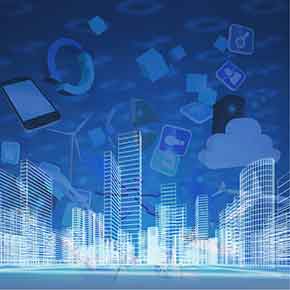Asia is the most rapidly urbanizing region in the world, and getting urbanization right is important for the region’s long-term growth. This urban growth is largely an Asian story; there are currently 2 billion people living in Asian cities, and a billion additional people are expected to move and join them by 2030.
The current trajectory of city growth is hardly sustainable. Cities account for the majority of their countries’ carbon footprint and 70% of the world’s carbon dioxide emissions. Asian cities already face the challenges of land constraints and high population densities, thus their growth path will have to be very different from that of Western countries such as the U.S. and Europe. How Asian cities grow – specifically, how the big megacities of tomorrow build their roads and buildings, and how they provide energy – will greatly affect the lives of billions.
Smart cities promise to be a next frontier of urban development, employing new technologies including sensors, mobile technology, and big data analytics. While smart technologies will not solve every urban ill, well-designed and well-governed cities that are also pleasant and convenient to live in can attract investment and human talent. Opportunities exist for businesses and government to create solutions that cater to high-rise homes, crowded neighborhoods, congested roads, and more broadly, services that respond to the needs and improve the living quality of urban residents.
This briefing explores several key areas and demonstrates how Asian cities are evolving and innovating in using smart technologies to achieve the goals of sustainability, livability, and responsiveness.
For the full briefing, please click on the link below:

